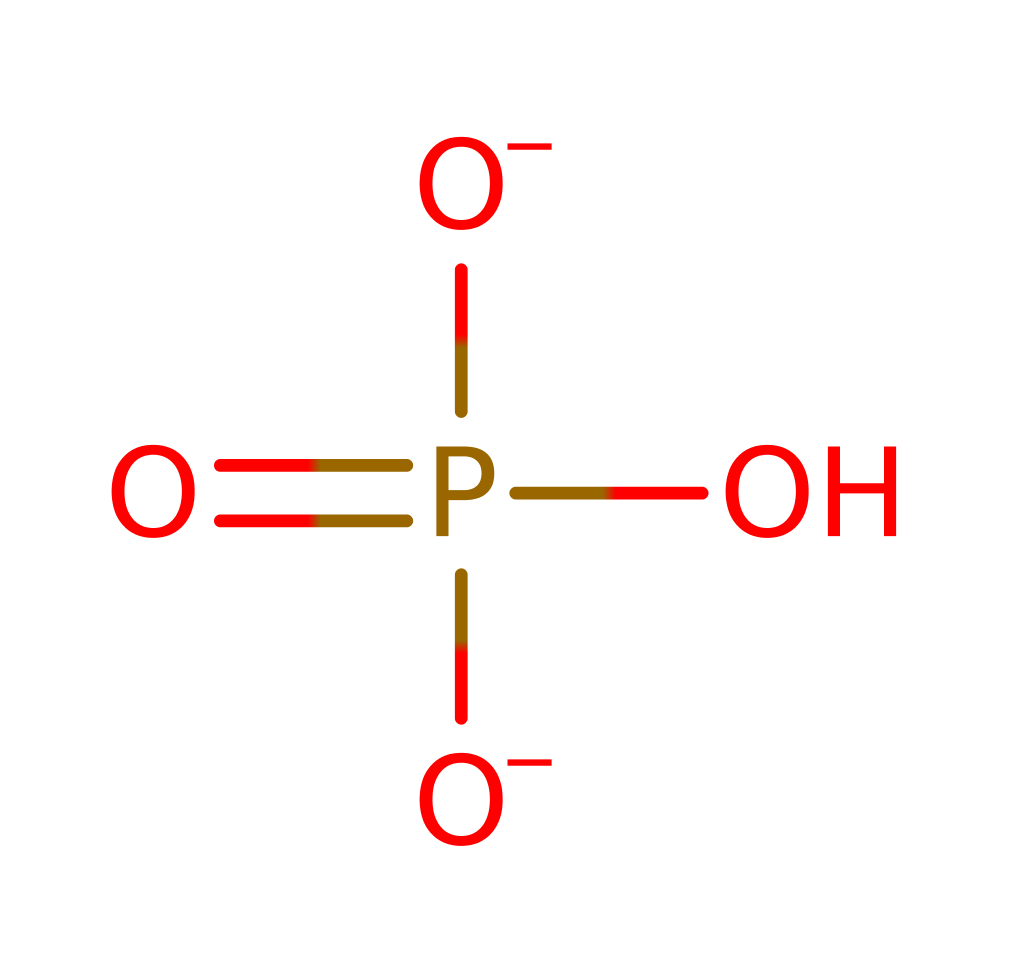Inositol-phosphate phosphatase
Mammalian brain inositol monophosphatase (IMPase) provides inositol for the biosynthesis of the key secondary messenger precursor, phosphatidylinositol 4,5-bisphosphate. Phosphatidylinositol 4,5-bisphosphate is hydrolysed by phosphatidylinositidase C in response to receptor occupation to give diacylglycerol (DAG) and inositol 1,4,5-trisphosphate (Ins 1,4,5-P3), both of which mediate signal transduction through specific interactions with their own targets. DAG activates protein kinase C which modulates the activity of many enzymes through phosphorylation, while Ins 1,4,5-P3 causes the release of calcium ions from an intracellular store. Brain cells vary in their ability to take up inositol and a series of phosphatases exist to sequentially hydrolyse Ins 1,4,5-P3 and other inositol polyphosphates via the bisphosphates to give inositol 1- and 4-monophosphates, substrates for IMPase. The effect of blocking IMPase with inhibitor Li+ cations is depletion of free inositol in brain cells and, thus, several groups have suggested that IMPase might be the target for the lithium ions in manic depression therapy.
Reference Protein and Structure
- Sequence
-
P29218
 (3.1.3.25, 3.1.3.94)
(3.1.3.25, 3.1.3.94)
 (Sequence Homologues)
(PDB Homologues)
(Sequence Homologues)
(PDB Homologues)
- Biological species
-
Homo sapiens (Human)

- PDB
-
1ima
- STRUCTURAL ANALYSIS OF INOSITOL MONOPHOSPHATASE COMPLEXES WITH SUBSTRATES
(2.3 Å)



- Catalytic CATH Domains
-
3.30.540.10
 3.40.190.80
3.40.190.80  (see all for 1ima)
(see all for 1ima)
- Cofactors
- Magnesium(2+) (2), Water (3)
Enzyme Reaction (EC:3.1.3.25)
Enzyme Mechanism
Introduction
Two Mg(II) ions bind to the enzyme. A water bound to Mg(II), aided by the phosphoryl group of the reactant forms an attacking nucleophilic hydroxide ion to cleave the phosphate-inositolate bond. Subsequent proton transfer steps occur to eliminate the products, myo-inositol and an inorganic phosphate enabling the active site to be ready for another round of catalysis. It has been observed Lithium is a powerful inhibitor of the enzyme due to binding to where one of the magnesium ions usually is found, preventing the phosphate group from leaving.
Catalytic Residues Roles
| UniProt | PDB* (1ima) | ||
| Asp90, Asp220, Asp93 | Asp90A, Asp220A, Asp93A | Form Mg2 binding site. Magnesium serves to stabilise the oxyanion intermediate formed in the reaction. | metal ligand |
| Glu70 | Glu70A | Acts as both a proton acceptor and subsequent donor to protonate the eventual leaving group myo-inositol. | metal ligand, proton acceptor, proton donor |
| Ile92 (main-C), Asp90, Glu70 | Ile92A (main-C), Asp90A, Glu70A | Form Mg1 binding site. Mg1 also coordinates to the subsequently activated water molecule that acts as a nucleophile to hydrolyse the ester bond. | metal ligand |
| Thr95 | Thr95A | Forms a hydrogen bond and positions the water molecule that will later act as a nucleophile to hydrolyse the ester bond between the phosphate and inositol. | hydrogen bond acceptor |
Chemical Components
bimolecular nucleophilic substitution, proton transfer, intermediate formation, overall reactant used, dephosphorylation, intermediate collapse, overall product formed, proton relay, native state of enzyme regenerated, intermediate terminatedReferences
- Wang X et al. (2013), J Phys Chem B, 117, 833-842. ONIOM (DFT:MM) study of the catalytic mechanism of myo-inositol monophosphatase: essential role of water in enzyme catalysis in the two-metal mechanism. DOI:10.1021/jp312483n. PMID:23268704.
- Atack JR et al. (1995), FEBS Lett, 361, 1-7. Structure and mechanism of inositol monophosphatase. DOI:10.1016/0014-5793(95)00063-f. PMID:7890024.

Step 1. The phosphoryl oxygen on the myo-inositol phosphate is protonated by a water molecule. This activates the water to then nucleophilically attack the phosphorous atom causing the phosphate bond to break. It is thought that proton transfer and the Sn2 reaction occur simultaneously.
Download: Image, Marvin FileCatalytic Residues Roles
| Residue | Roles |
|---|---|
| Ile92A (main-C) | metal ligand |
| Asp93A | metal ligand |
| Asp90A | metal ligand |
| Glu70A | metal ligand |
| Asp220A | metal ligand |
| Thr95A | hydrogen bond acceptor |
Chemical Components
ingold: bimolecular nucleophilic substitution, proton transfer, intermediate formation, overall reactant used, dephosphorylation
Step 2. A phosphoryl hydroxide ion donates a proton to Glu70. The magnesium ion stabilises the oxyanion negative charge.
Download: Image, Marvin FileCatalytic Residues Roles
| Residue | Roles |
|---|---|
| Glu70A | metal ligand |
| Asp93A | metal ligand |
| Asp220A | metal ligand |
| Asp90A | metal ligand |
| Ile92A (main-C) | metal ligand |
| Glu70A | proton acceptor |
Chemical Components
proton transfer, intermediate collapse, overall product formed
Step 3. Glu70 rotates and protonates the oxyanion intermediate via a water molecule to form the final product, myo-inositol. The water molecule maintains its coordination with a magnesium ion.
Download: Image, Marvin FileCatalytic Residues Roles
| Residue | Roles |
|---|---|
| Glu70A | metal ligand |
| Asp90A | metal ligand |
| Ile92A (main-C) | metal ligand |
| Asp93A | metal ligand |
| Asp220A | metal ligand |
| Glu70A | proton donor |




 Download:
Download: